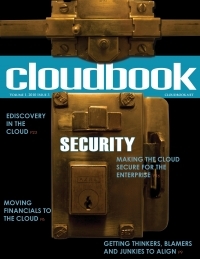This issue includes features such as:
- Building a business case for moving financials to the cloud
- The worst of the downturn may be behind us, but its lessons remain clear. For businesses to survive and thrive, they must be able to make better decisions quickly, focus on core strengths and responsibilities, and reduce costs wherever possible. Cloud computing solutions provide a fiscally responsible, productivity-positive meansway to deliver on these goals, eliminating waste and needless expense while strengthening the processes which make your company competitive and successful.
- Making the cloud secure for your enterprise
- Security issues associated with third-party cloud environments continue to prevent organizations from taking advantage of the cost savings and flexibility that the cloud can offer. Today, using a public cloud means moving from an internal environment where a company has complete control of data and processes to an environment where that control belongs to someone else, and is often opaque. Within the cloud, applications run in a multi-tenant environment sharing virtual machines with other customers. Companies considering moving an application to a cloud have legitimate concerns about data being compromised or stolen, including unauthorized access by cloud administrators, exposure in the Internet or rogue employees using the cloud to corrupt or leak sensitive information.
- Getting Thinkers, Blamers and Junkies to Align
- Here’s some good news in this perilous economic climate: The need to do more with less — and faster — is bringing sales and marketing teams together. More than a half of B2B companies are talking about aligning the two teams.
- Demanding Linux Deployments in the Cloud
- The challenge for evolving cloud computing architectures is that there have been and always will be a significant number of applications that can’t easily serve existing compute nodes. These demanding workloads require either a large number of processing cores or large memory (RAM) footprints that are beyond the scale of normal cloud computing resources. For end users who have been increasingly disaggregated from the compute nodes and trained to think of compute resources as on-demand, this is both frustrating and challenging, as they have to differentiate workloads that can run in the cloud from those that continue to need dedicated, expensive and purpose built hardware.
- Negotiating Cloud Service Level Agreements
- The greatest value of negotiating a service level agreement comes from establishing a strong working relationship that allows the two parties to work together to mend the fence when it falls down.
- eDiscovery in the Cloud: A Nightmare Scenario
- Your company uses cloud computing as a cost-effective element of its business operations. And then one day your company is sued. What are the implications?
- How to get marketing and sales to align
- How to run demanding Linux deployments in the cloud
- Negotiating cloud service level agreements
